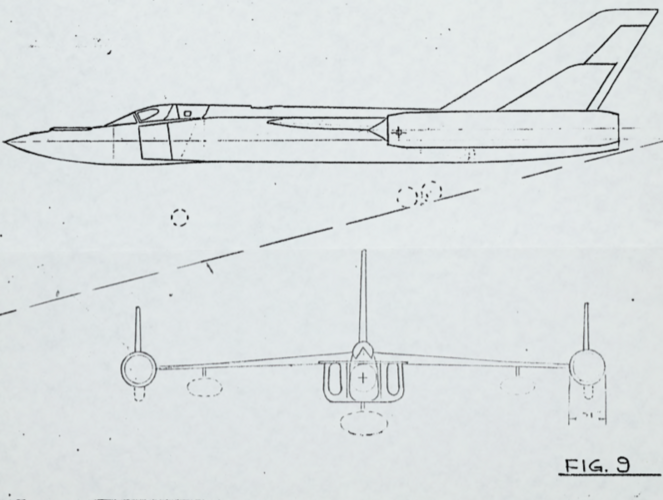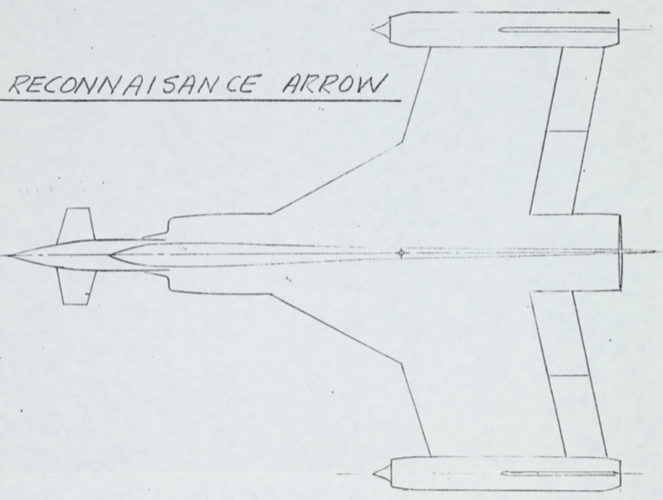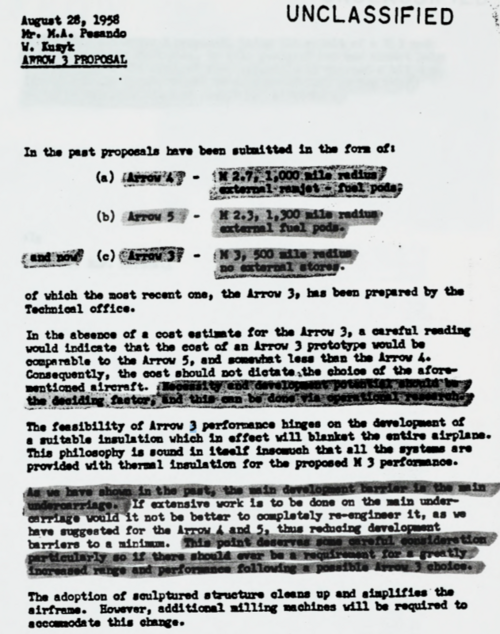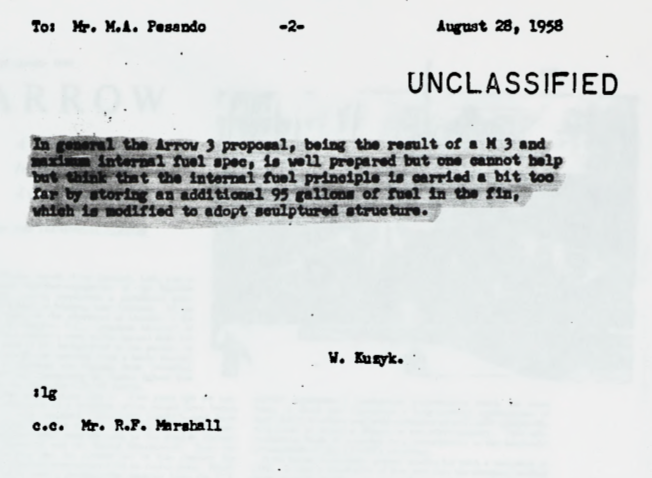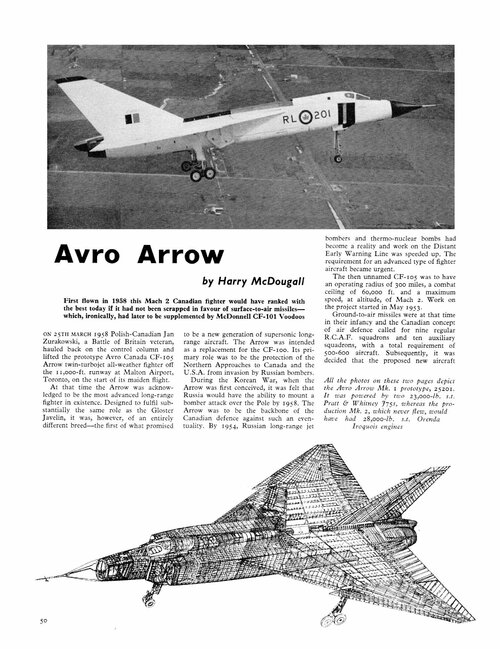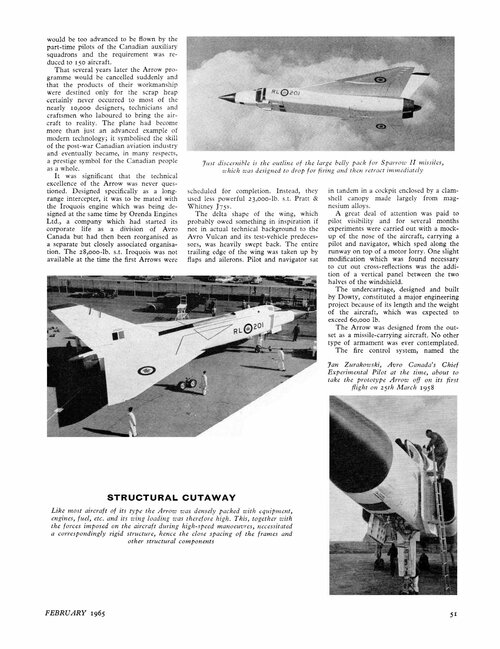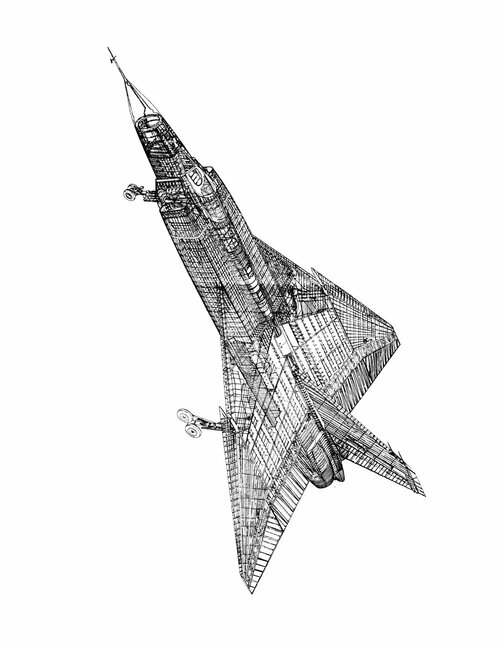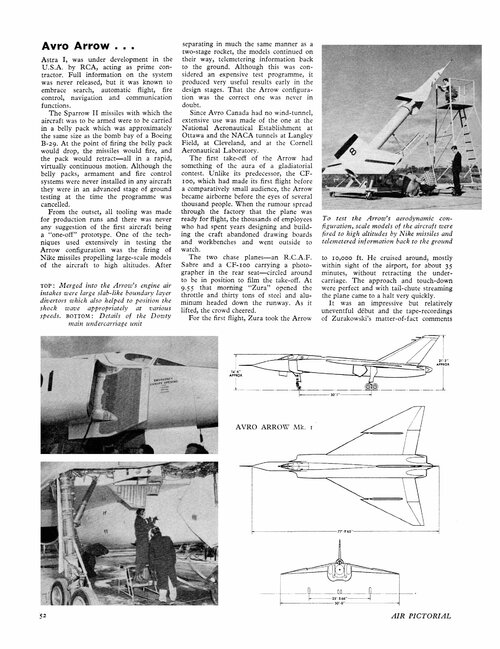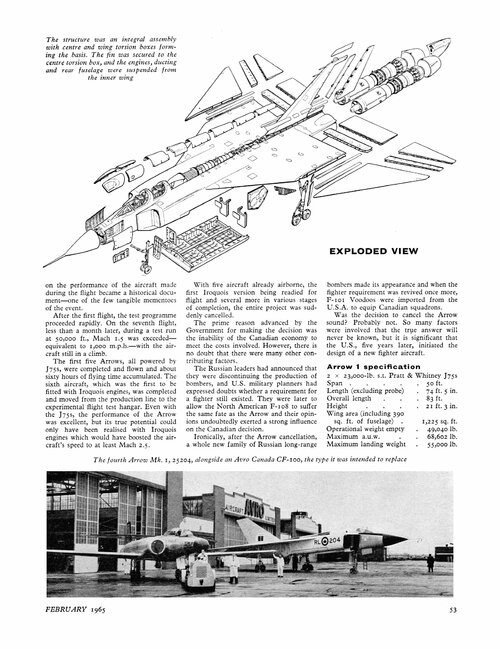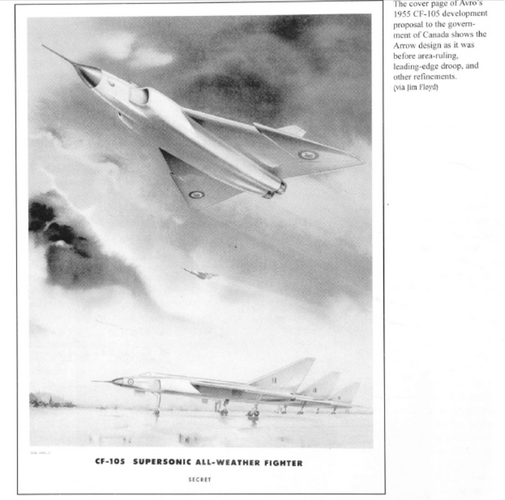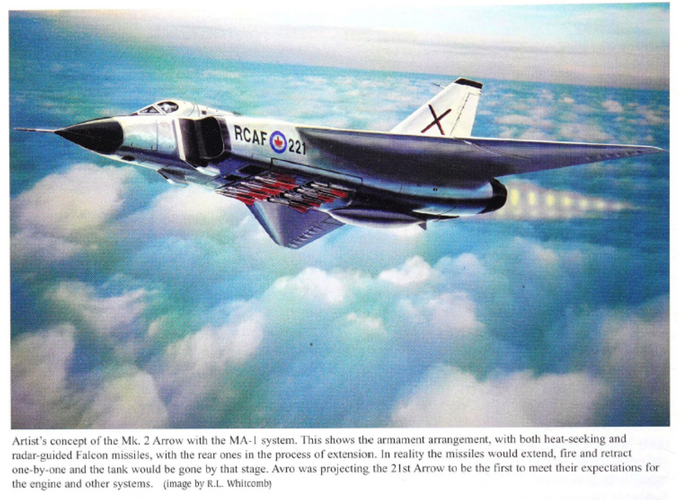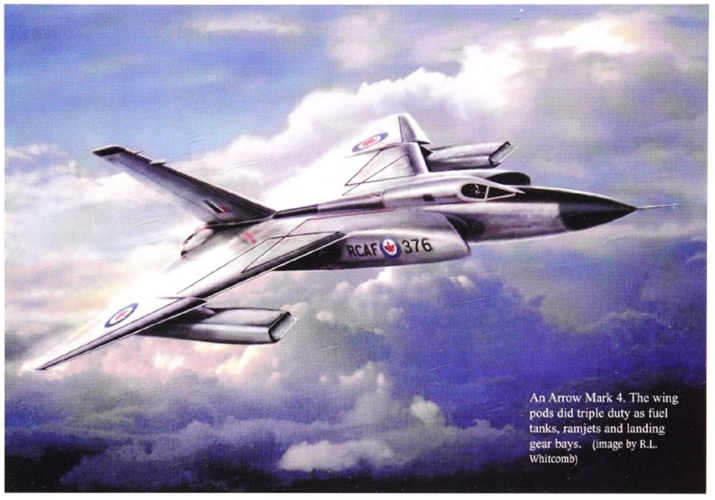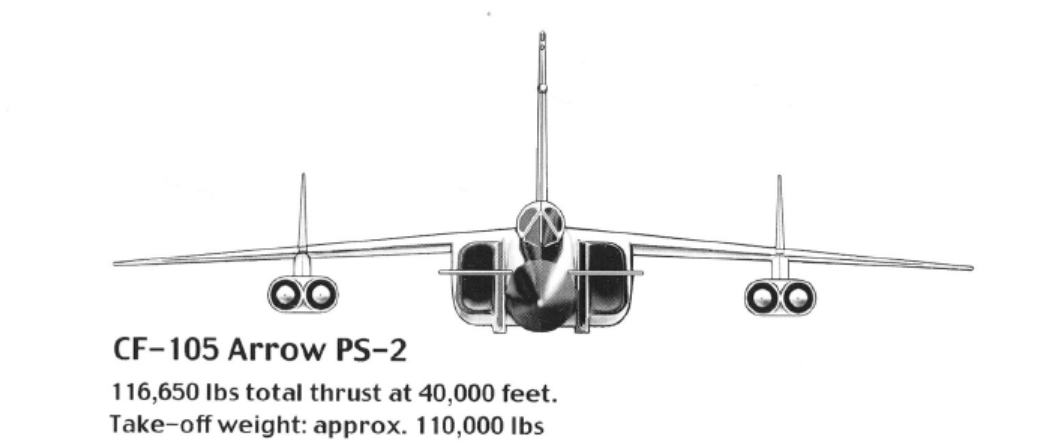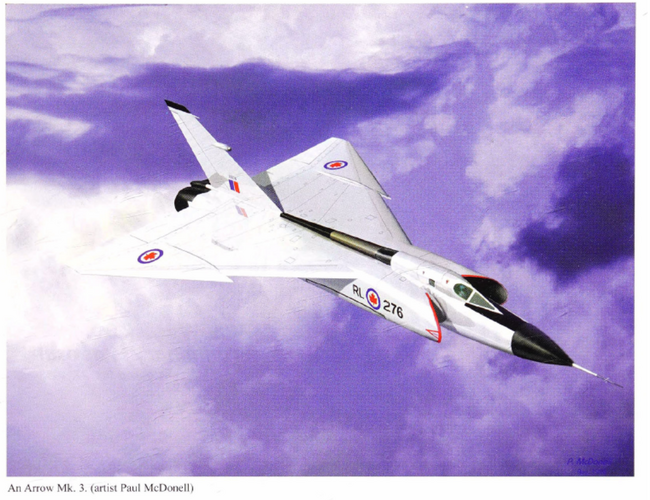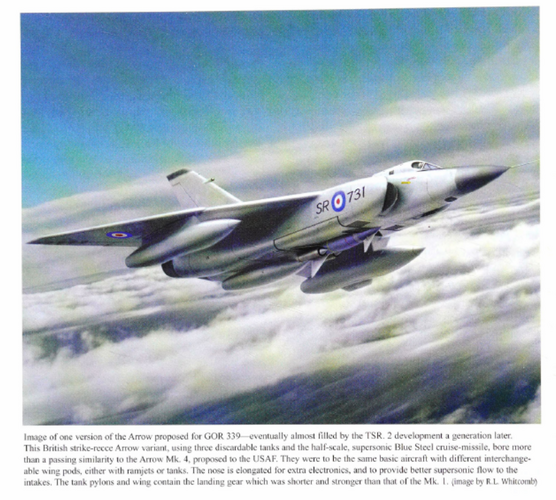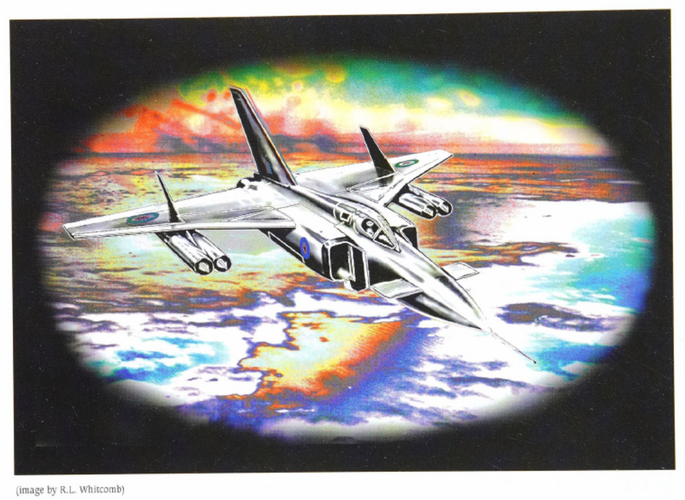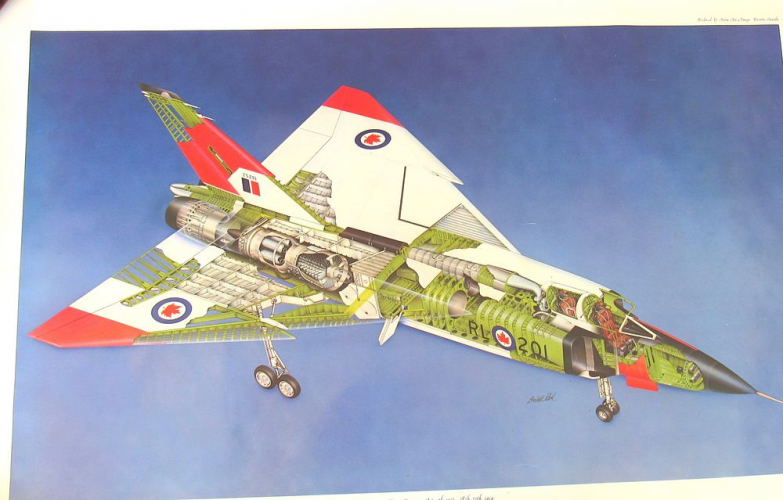Fact was that Arrow combat range was short, very short... 200 to 300 miles... no more. A bit surprising for an aircraft this size, yet the Iroquois and delta wing drag may explain part of it (even with primitive analog FBW, surface of that wing was colossal: 114 m2). For the sake of comparison a Mirage IVA was barely 75 m2, and so was the Mirage 4000.
Some documents about the Arrow use the word range when they should use radius.
Performance of the Arrow 2: periodic performance report no. 15 published in November 1958 estimated a combat radius from 338nmi to 589nmi depending on profile (the 338nmi was for a Mach 1.8 mission while the 589nmi figure was for a completely subsonic mission). It also included estimates of of what each 1000lbs of extra fuel or weight reduction would affect each profile (the report stated that the Operational Empty Weight used was "conservative and approximate only" though it did assume 2180lbs of fuel in the weapons pack in addition to 19,433lbs).
A post cancellation document published in 1961 titled
A Limited Technical Evaluation of the Avro Arrow Interceptor System includes details about the mission profiles used for the estimates such as cruise speed and length of combat though it is one of the documents that says range where it should say radius (it uses the estimated figures from the 1958 Performance Report but lists them as range instead of radius).

